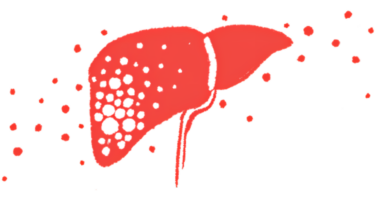Lower-dose Preventive Therapy Reduced Bleeding Events in Thai Children with Hemophilia A, Study Shows

A lower dose of regular, preventive therapy with factor VIII concentrates was better at reducing bleeding events and improving joint function than on-demand treatment in children with hemophilia in Thailand, a study shows.
The study, “Prophylactic vs episodic treatment to prevent bleeds and preserve joint function in Thai children with moderate and severe hemophilia A,” was published in the journal Haemophilia.
Hemophilia A is a bleeding disorder caused by a deficiency in an essential blood-clotting protein called coagulation factor VIII.
Most people with hemophilia A are treated with injections of factor VIII concentrates (FVIII), either during an acute bleeding episode (on-demand or episodic treatment) or as regular supplementation to prevent bleeding (prophylactic replacement therapy), which is currently the standard of care for hemophilia management.
In Thailand, early treatment with factor concentrates has been promoted for patients since the therapy was approved in 2006. Despite the known benefits of prophylaxis, episodic treatments for hemophilia A continue to be the primary treatment with few institutes implementing a preventive strategy.
Episodic treatment “remains the mainstay of hemophilia management in Thailand due to the factor concentrates’ high cost,” the authors said.
To determine the effectiveness of the prophylactic replacement therapy given at a lower dose and less often (thus incurring lower costs for patients), researchers at the King Chulalongkorn Memorial Hospital in Bangkok, Thailand, designed a study (NCT02362581) to use episodic treatment on Thai children with hemophilia A as a first intervention, before switching them to prophylactic therapy and comparing their outcomes.
The team identified 15 people with hemophilia A who were from 6 months to 18 years old. Of these, 12 had the severe form of the condition (FVIII <1%), and three patients had moderate hemophilia A (FVIII 1%–5%).
For the first six months after enrollment, all patients received episodic treatment with FVIII concentrates (HEMOFIL-M, at 20–40 IU/kg dose) only during an acute, clinically recognized bleeding event. Following a one-month period without treatment, the children received regular infusions of FVIII (30–35 IU/kg dose) once a week for the next six months.
The analysis found that, compared to when they received episodic treatment, patients on prophylactic therapy had significantly fewer bleeding events and fewer spontaneous bleeding events that required FVIII intervention.
Given that bleeding in the joints is a common complication of hemophilia, the team used the Haemophilia Joint Health Score (HJHS) — a measure of the impact of bleeding on the elbows, knees, and ankles.
The results revealed that the participants had better joint and HJHS scores during prophylactic therapy than during episodic treatment, although the differences were not significantly different.
The improvement in HJHS scores was not unexpected given the short duration of the study, and most patients had already developed joint conditions.
Patients also experienced a significantly better quality of life during prophylactic therapy as assessed by the EQ-5D-5L quality of life questionnaire, and had fewer school absences and days in which they were unable to engage in routine activities.
A cost analysis showed that the total cost of FVIII replacement therapy was significantly higher for regular prophylactic therapy than episodic treatment. However, the total cost of prophylactic treatment for the doses used in this study (average of 1,168 IU/kg/year) is below the prophylactic therapy doses used in Europe and North America (between 2,000 and 4,000 IU/kg/year).
“Prophylaxis of children with moderate or severe hemophilia A is more effective than episodic treatment in reducing the number of bleeds and the number of days patients are unable to perform routine activities or attend school,” the authors wrote. “It can also offer improved quality of life for patients.”
“With Thailand’s limited budgets for hemophila treatment, a prophylaxis regimen of 30–35 IU/kg of FVIII concentrates once weekly can be considered for the treatment of children with severe or moderate [hemophilia A],” they said.






